- within Energy and Natural Resources topic(s)
- in North America
- within Real Estate and Construction topic(s)
Background
Mongolia's total renewable energy potential is 2600 gigawatts (GW), over 1000 times larger than the 1.6 GW installed capacity of Mongolia's electricity system1 . In the decades ahead, this potential could be harnessed through the vast solar and wind resources of Mongolia's Gobi Desert. With the effective development of energy transmission infrastructure, these resources could not only meet domestic energy consumption but also fulfill the energy demands of the Northeastern Asian region. Despite its vast renewable energy potential, Mongolia currently depends on coal-fired thermal power plants for about 90 percent of its electricity production. Coal is also the primary source of heating. As a result, the energy sector is the major contributor to significant greenhouse gas emissions and severe air pollution in the country. The amount of electricity produced in Mongolia in 2023 was about 8528 million kWh, an increase of 3.3% or 349.7 million kWh over the year before. The majority of electricity produced, 90.9%, came from combined heat and power plants; the remaining 8.5% came from solar and wind power, 0.6% from hydropower sources, and 0.01% from diesel generators. In addition, the amount of power imported during the reporting period was 2447.6 million kWh, which represents a 13.2% increase over the previous year by 286.3 million kWh.2
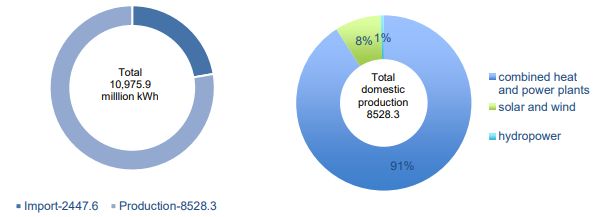
Therefore, Mongolia is taking concrete actions to increase development and investment in its renewable energy sector. In particular, Mongolia amended the Renewable Energy Law in 2008, 2011, 2012, 2015, 2019, and 2022, adding key provisions to support renewable energy projects. These amendments include the introduction of feed-in tariffs, a competitive auction system for renewable energy projects, project implementation guarantee and other supportive measures.
Mongolia's climate commitments under International Agreements
Mongolia has shown a strong commitment to supporting the ultimate goal of the United Nations Framework Convention on Climate Change (UNFCCC)—limiting global warming to well below 2°C, and pursuing efforts to limit it to 1.5°C —through the following actions:

In September 2015, Mongolia adopted its first Nationally Determined Contribution (NDC) to the UNFCCC, committing to reduce greenhouse gas emissions by 14% by 2030. In 2019, Mongolia updated its NDC target to 22.7% by 2030. This target includes reducing carbon emissions from the energy production and supply sector by 8.34 million CO2-equivalent (CO2-eq) tonnes and reducing carbon emissions from renewable energy by 2.97 million tonnes CO2-eq3.
To achieve this international commitment, Mongolia is actively working to increase the share of renewable energy in its total installed energy capacity, including wind, solar, and hydropower. It has developed and adopted key state policy documents, such as "Vision-2050" and the "2021 New Recovery Policy." Specifically, Vision-2050, the country's long-term development strategy approved by Parliament in 2020, reflected the government's target to increase the installed renewable energy capacity to 30 percent by 20304.
Amendments to the 2007 Renewable Energy Law to Support the Renewables
Tariff change and feed-in tariffs
The provisions for renewable energy tariffs were amended in 2015 and 2019. These amendments replaced the previous tariff system, which included minimum (floor) and maximum tariffs, by introducing a cap on renewable energy tariffs without establishing a minimum tariff.
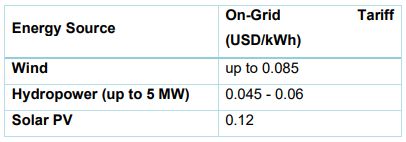
The Energy Regulatory Committee(hereainfter "the ERC") reviews and approves energy price calculations, sets tariffs within the specific limits above, and monitors agreements between producers and the National Dispatching Center. The National Dispatching Center is responsible for purchasing electricity from producers at approved tariffs and managing grid expansion, excluding the connection of producers to the transmission grid. The National Power Transmission Grid is responsible for connecting the transmission line from the renewable energy plant to the grid, which is built and paid for by the developer.
The tariff limits are determined based on the payback period of the investment to ensure that renewable energy projects remain financially viable, encouraging investment in clean energy infrastructure while avoiding undue financial burden on consumers.
The difference in the price of electricity produced by renewable energy producers connected to the transmission grid shall be compensated through feed-in tariffs, as stipulated in Article 11 of the Renewable Energy Law. Feed-in tariffs (FiTs) are a policy mechanism used to promote the development of renewable energy projects by guaranteeing a fixed payment to energy producers for the electricity they generate. These tariffs are designed to provide financial incentives to renewable energy producers by offering long-term contracts at stable, often above-market prices, which encourage investment in renewable energy infrastructure.
Factors for determining the prices and tariffs
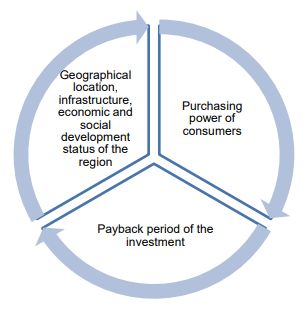
Competitive procurement of renewables
Renewable energy projects for constructing generators connected to the grid will compete for selection based on established technical criteria and price offers. The procurement process will be conducted through an auctioning system by the Ministry of Energy. Project selection involves the following stages5, as specified in the Regulation for Competitive Procurement of Renewables:
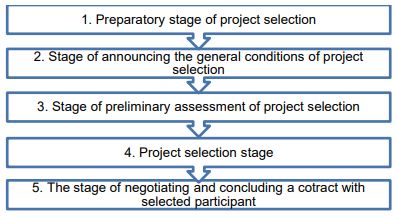
Principles for organizing the project selection
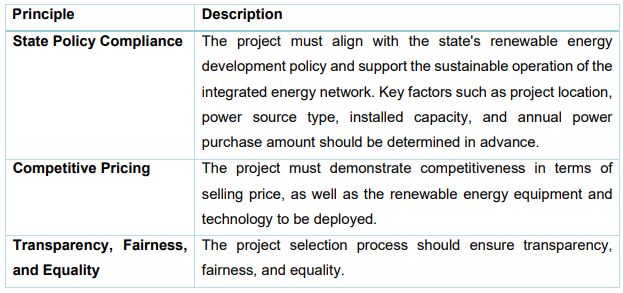
Obtaining a special permit and project implementation guarantee
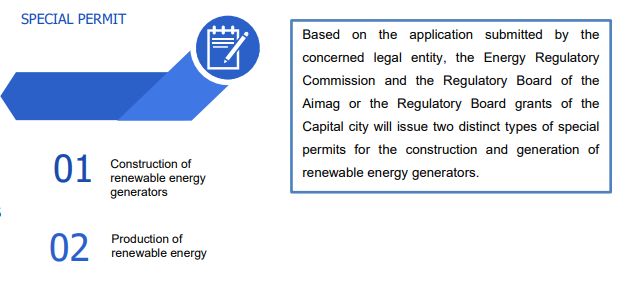
A project implementation guarantee means funds deposited in the bank and a bank guarantee submitted by a project participant confirming the full implementation of the project. It ensures that developers meet their obligations and complete the construction of the plant on time. This guarantee must clearly be outlined in the power purchase agreement between a renewable energy producer and a National Dispatch Center according to the law.
Taxation and non-taxation Incentives and Exemptions for Renewable Energy Production and Equipment for investors
To encourage domestic and foreign investment in renewable energy production, research, development, and infrastructure, the following tax and non-taxation incentives are provided:
Tax Incentives
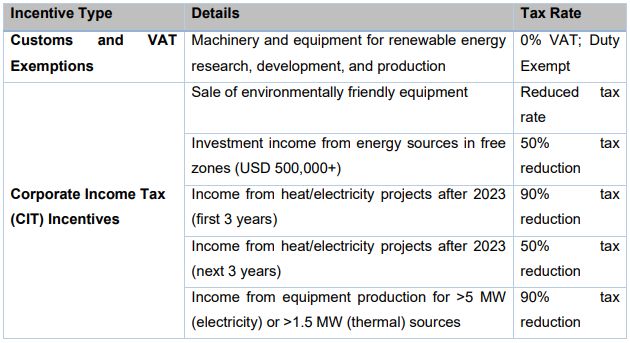
Non-Taxation Incentives
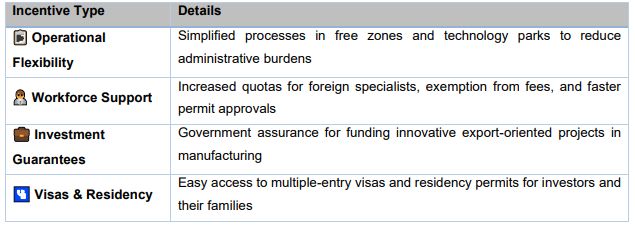
To view the full article click here.
Footnotes
1. Solar and wind power in Mongolia, 2024 Policy overview by Stockholm Environment Institute https://www.sei.org/publications/solar-wind-mongolia-2024-policy/
2. Comparative Policy Analysis of Renewable Energy Expansion in Mongolia and Other Relevant Countries https://www.mdpi.com/1996-1073/17/20/5131
3. Nationally Determined Contribution (NDC) of Mongolia for the Implementation of the Paris Agreement https://legalinfo.mn/mn/detail?lawId=14843
4. Action plan for 2021-2030 of Mongolia's long-term development policy "Vision-2050 https://legalinfo.mn/mn/detail?lawId=211058&showType=1
5. Regulation for Competitive Procurement of Renewables https://legalinfo.mn/mn/detail?lawId=211075
The content of this article is intended to provide a general guide to the subject matter. Specialist advice should be sought about your specific circumstances.



